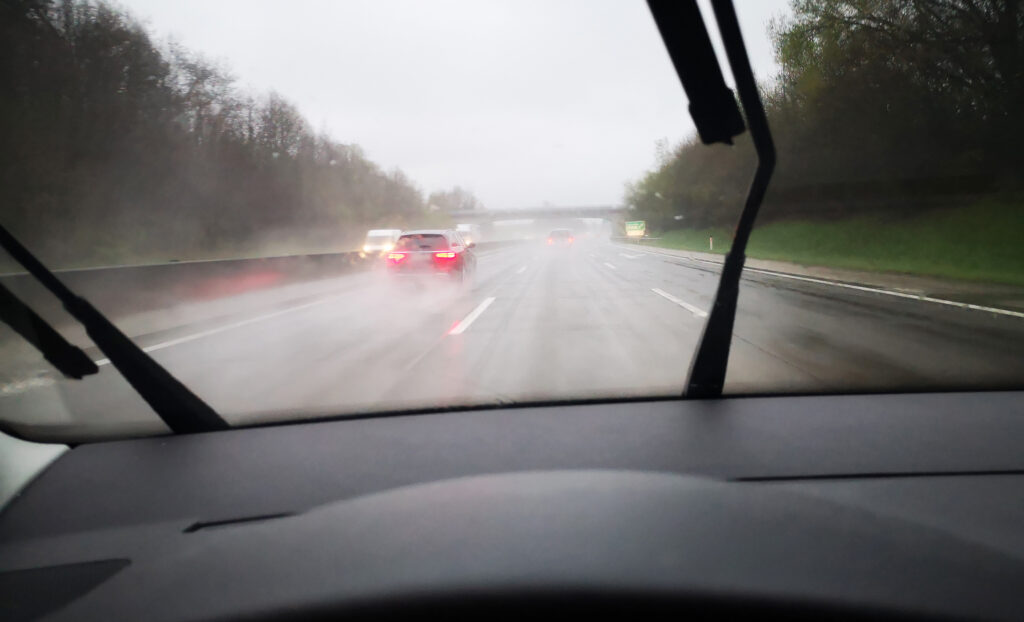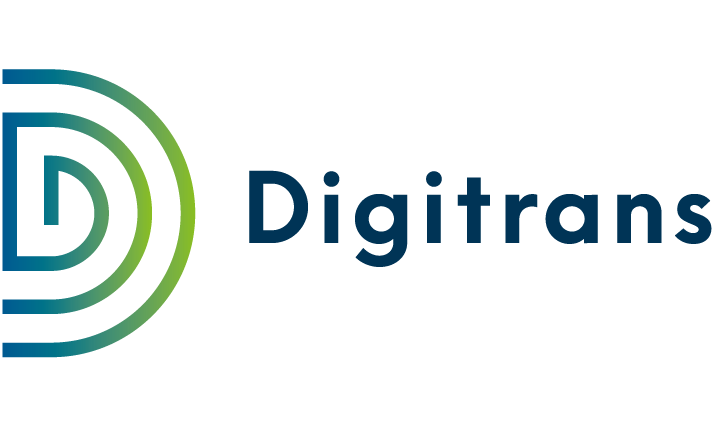Autonomous driving in adverse weather conditions - why it is important to test AD and ADAS sensors in rain
Rain is an exciting natural phenomenon. It occurs in nature in various forms, from drizzle to downpour and heavy rain, and can take on different drop shapes and sizes. When a human being is at the wheel of a vehicle, he or she can make decisions based on experience when precipitation occurs and thus adapt his or her behavior to the road and weather conditions.
An automated vehicle must first learn to deal with different weather situations. Sensor technologies in autonomous vehicles or sensors for object and environment recognition in advanced assistance systems (ADAS sensors), such as: LiDAR, radar or cameras, have difficulties in correctly perceiving their environment when rain intensity increases, similar to humans.
Therefore, testing and performance verification of these sensors in adverse weather conditions, such as rain, is an important safety criterion for the introduction of automated vehicles in Europe.
5 reasons why we built an outdoor rain plant to test autonomous driving features:
- 1. safety problem in rain – performance of AD and ADAS sensors decreases as rain intensity increases.
- 2. transfer of responsibility from human to machine and environment recognition systems.
- 3. rain testing of AD and ADAS sensors indoors is limited
- 4. natural rain is not suitable for reproducible AD and ADAS testing
- 5. autonomous driving and transportation must function efficiently and safely in all weather conditions
1. safety problem in rain - performance of AD and ADAS sensors decreases as rain intensity increases.
Systems responsible for environment recognition in autonomous vehicles face similar challenges as humans when visibility is poor. In rain, fog, snow, reflections and backlighting, the sensors (lidar, radar, camera) are impaired in detecting the environment and objects. These weather effects can affect the performance of all sensors in autonomous vehicles. Lidar in particular is affected differently than camera systems, for example. The system emits light beams that reflect off of surrounding surfaces and are detected by the lidar system.
The result is a lidar point cloud that shows the reflected objects in the environment. When it rains, the light rays may hit a raindrop, which is then reflected, scattered or attenuated. This causes the system to detect an object where in reality only a raindrop has reflected the light beam. The lidar’s image becomes noisier as the rainfall increases, and objects farther away can no longer be detected accurately enough.
Care must be taken to improve this in order to get safe automated vehicles on the roads.
Das Ergebnis ist eine Lidar-Punktwolke, die die reflektierten Objekte in der Umgebung zeigt. Bei Regen können die Lichtstrahlen auf einen Regentropfen treffen, der dann reflektiert, gestreut oder gedämpft wird. Dies führt dazu, dass das System ein Objekt erkennt, wo in Wirklichkeit nur ein Regentropfen den Lichtstrahl reflektiert hat. Das Bild des Lidars wird mit zunehmendem Regen immer rauschiger und weiter entfernte Objekte können nicht mehr genau genug erkannt werden.
Es muss dafür gesorgt werden, dass dies verbessert wird, um sichere automatisierte Fahrzeuge auf die Straßen zu bekommen.

Example of an ADAS sensor test with LiDAR sensors under dry conditions and at slow speed on the test track at the Digitrans Test Center. Stable ground truth referencing of target vehicle and lane markings. © TU-Graz

ADAS sensor test with LiDAR sensors in moderate rain and fast speed on the outdoor rain plant at the Digitrans test center. Groundtruth referencing of the target vehicle remained stable while road markings could no longer be detected in the sprinkler system. © TU-Graz
2. transfer of responsibility from human to machine and environment recognition systems.
With increasing autonomy, more and more of the environment and object recognition is being transferred from the driver to the vehicle. Sensors and systems that have not yet been independently tested for their performance and machine safety in adverse weather conditions are increasingly entering the market. All these sensors and systems need to be independently tested for their performance in adverse weather conditions.

Sketch of the shift of competence from man to machine © DigiTrans GmbH
3. Indoor rain tests of AD and ADAS sensors are limited
The currently used instruments for rain tests often do not provide a realistic imitation of natural rain. Until now, it has often only been possible to perform such tests indoors with limited distance, height, and slow speed. Space limitations severely limit these tests and their results.
On an outdoor rain facility, rain tests of sensors in automated vehicles can be performed under more realistic conditions and at higher speeds, allowing the spray from overtaking vehicles to be included in the measurement data.

Example image: In the indoor area, real traffic scenarios like the one in the image can hardly be recreated. Complex traffic scenarios and overtaking maneuvers are only possible on large installations in outdoor areas. © DigiTrans GmbH
4. Natural rain is not suitable for reproducible AD and ADAS tests.
Much of natural rain is not suitable for systematic qualification and validation of sensor performance because of the rapidly changing intensity of the rain. That is why artificially generated rain is necessary to adjust it and the droplet size distribution during testing. In addition, natural rain cannot be easily turned on and off as desired, and it may not rain at all at the time of testing. This may result in a large financial and time cost. With the outdoor rain plant at the Digitrans Test Center in St. Valentin, such rain tests become more predictable and easier to carry out.
5. autonomous driving and transportation must function efficiently and safely in all weathers
One of the biggest difficulties and therefore one of our main interests at Digitrans is to make automated driving and transportation usable for everyday use, in all weather conditions. To achieve this, it is necessary to test all systems and sensors in automated vehicles in the rain and to create a generally applicable safety standard for these systems. Only in this way can we use automated systems efficiently and safely for the transportation and mobility of tomorrow.
Mit der Outdoor-Regenanlage in St. Valentin bieten wir die erste Anlage, welche es erlaubt, die Leistungsfähigkeit, sowie die Grenzen von Sensoren und Algorithmen bei verschiedenen Regenintensitäten in einer realistischen Umgebung im Freien zu testen.
Und das alles geht einfach auf Knopfdruck!


Outdoor rain plant for AD and ADAS tests at the Digitrans test center for automated driving on the test track in St. Valentin. © DigiTrans GmbH
This may also be interesting
Further Insights

Road weather station provides extensive weather data for the further development of automated driving in rain
A state-of-the-art road weather station supports the experts with a detailed analysis of the environmental conditions and provides a comprehensive real-time data set of the weather conditions on the Proving Ground in St. Valentin.

Clear track for testing automated commercial vehicles
Until now, the use of automated commercial vehicles for testing has been limited. One of the major hurdles up to now has been legislation. At the end of last year, DigiTrans GmbH worked together with Reform-Werke on a change in the law that is unique in Europe.

Five reasons why we built an outdoor rain plant for testing autonomous driving functions
Testing autonomous driving functions and their sensors under adverse weather conditions is an important safety criterion for the introduction of automated vehicles in Europe. Learn why it is becoming increasingly important to test these systems systematically and reproducibly.
